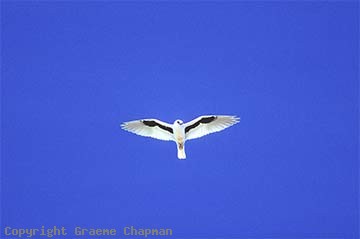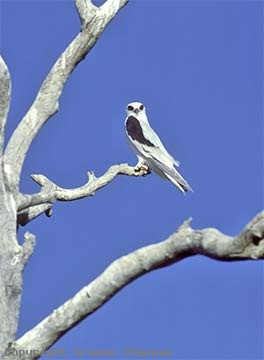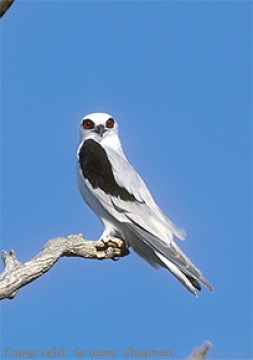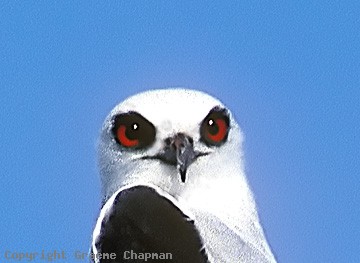Australian BirdsLetter-winged Kite
|
Letter-winged Kites are largely nocturnal. Their core range roughly coincides with that of the Long-haired Rat, that is central eastern Australia along the Diamantina River and Cooper's Creek drainages and the catchments of Lake Eyre. The Long-haired Rat, Rattus villosissimus,
is an important item in their diet.
These central arid regions are like most of our deserts, subject to extremes of climate and the resultant feast or famine. Also known as the Plague Rat, for good reason, in good times the rats form huge plagues, overrunning the countryside, and in response so too Letter-winged Kites greatly increase in number. Eventually, when things return to normal, that is dry and parched, out there, the large number of kites have nothing to eat and so they go wandering. Every few years, irruptions of Letter-winged Kites appear in areas where they don't normally occur and sometimes they even reach the coast. An unfortunate downside to it all - when the rats increase so too do wild cats and they become one of the principal predators of Letter-winged Kites. Out where the kites nest, the trees are not very high, nor are their nests and the cats have no trouble in climbing to them. There are stories of people spotlighting out there at night and seeing a cat sitting in nearly every kite's nest. |

233201 ... Letter-winged Kite. |

233202 ... Letter-winged Kite |

233203 ... Letter-winged Kite |

233208 ... They hunt mainly at night - principally on the Long-hared Rat, Rattus villosissimus. |
